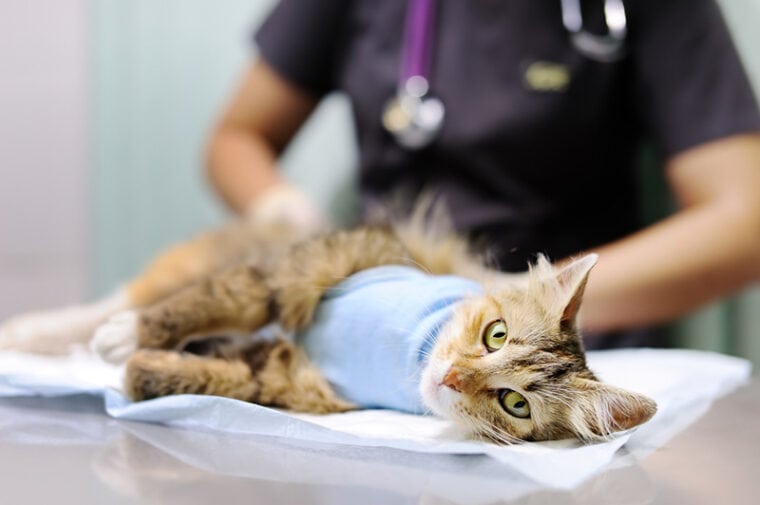
Just the word, “hemangiosarcoma”, sounds intimidating—and it is certainly not something any cat owner wants to hear from their veterinarian! Fortunately, this cancer is rare in cats. Unfortunately, this means there is limited information available. Much of what we know is the result of individual case reports, rather than large studies. Hemangiosarcoma is cancer that starts in the lining of a cat’s blood vessels.
In this article, we will discuss the types of hemangiosarcoma that occur in cats, what to watch for as an owner, current treatment options, and what to expect if your cat has been diagnosed with this cancer.

What is Hemangiosarcoma?
Hemangiosarcoma is cancer originating from the endothelial (internal) lining of blood vessels. Unfortunately, it is malignant cancer, which means it does not stay as a single tumor (it spreads locally and throughout the body).
Since blood vessels are found everywhere in the body, tumors can form in many different locations. In cats, 4 main types of hemangiosarcoma have been documented, which are named according to where the tumor(s) are found:
The cutaneous and subcutaneous forms appear to be most common in cats. These may be primary tumors or secondary to spread of cancer cells from another location.
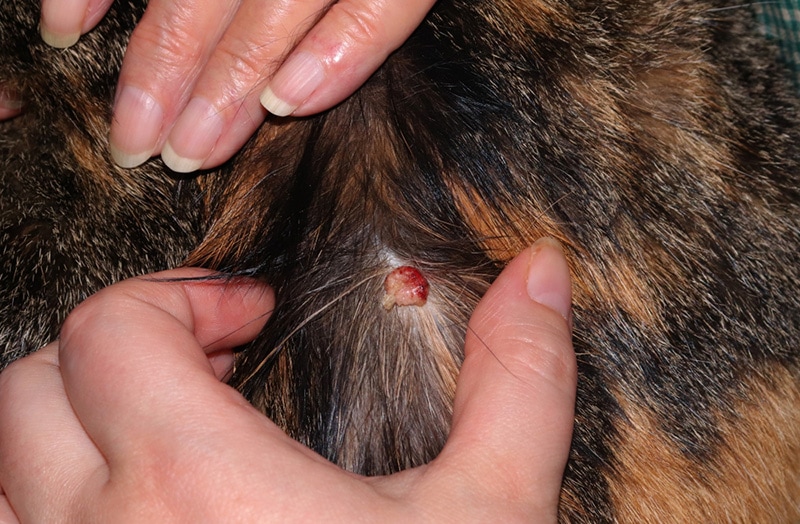
What Are the Signs of Hemangiosarcoma?
The signs of hemangiosarcoma depend on where the cancer is growing.
The following lists offer some things to watch for, but are certainly not exhaustive, and many of the signs are not specific to hemangiosarcoma. If you have any concerns at all about your cat’s health, please schedule an appointment with your veterinarian.
Signs of Cutaneous Hemangiosarcoma
Signs of Subcutaneous Hemangiosarcoma
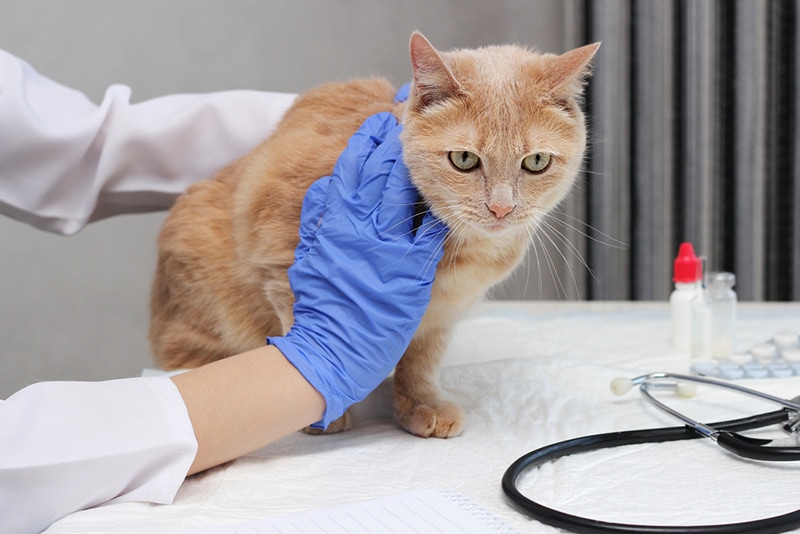
Signs of Visceral Hemangiosarcoma
If hemangiosarcoma has been growing for a while (chronic presentation), owners may notice non-specific signs such as:
If a tumor suddenly breaks open and starts bleeding (acute presentation), more dramatic signs may occur:
Signs of Oral Hemangiosarcoma


What Are the Causes of Hemangiosarcoma?
In dogs, there is evidence to suggest that the cutaneous form of hemangiosarcoma is related to sunlight exposure, as it occurs more frequently in patients with light-colored skin, on parts of the body with a little fur. The same may be true for cats.
The causes of other types of hemangiosarcoma are not currently known. It is likely the result of multiple factors including genetics, environment, and lifestyle.
Research has identified some specific genetic mutations that may be associated with the development of hemangiosarcoma in cats. There is much more work to be done, but these types of studies are promising! One day we hope to be able to use genetic screening to identify cats at higher risk of certain cancers. This would allow for close monitoring and earlier detection of disease, hopefully leading to better outcomes for affected kitties.
How Do I Care for a Cat With Hemangiosarcoma?
If your cat has been diagnosed with hemangiosarcoma, your veterinarian will discuss the treatment option(s) available to you. Depending on the location of the tumor(s) and whether it has metastasized (i.e., spread to other parts of the body), these may include:
Your veterinarian may recommend setting up a consultation with a veterinary oncologist (cancer expert) who can provide you with the most up-to-date information and treatment options. They can also give you an honest idea of what to expect, based on their clinical experience.
In addition to any treatment(s) targeting the cancer itself, your cat will likely need some general supportive care and, of course, some extra love from you! Remember that your cat’s quality of life should always be the top priority. It is easy to get caught up in chasing a cure for your pet’s cancer, but sadly this is not always possible.
Your veterinarian will do their best to keep your cat comfortable, and resources like this one can help you monitor their quality of life. Eventually, as difficult as it can be to accept, the kindest option may be humane euthanasia.
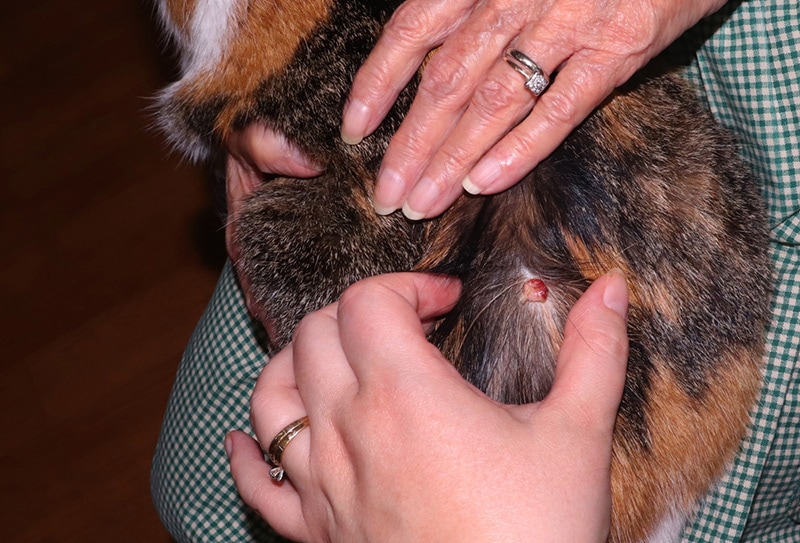

Frequently Asked Questions
How is hemangiosarcoma diagnosed?
Definitive diagnosis of hemangiosarcoma requires a biopsy, which means taking a sample of the suspected tumor so the cells can be examined under a microscope. Depending on the mass location, this procedure might require general anesthesia. Depending on the size of the tumor, your veterinarian may collect only some of the abnormal tissue or try to remove it completely (plus some of the normal tissue around it, to be safe).
Fine needle aspirate (FNA) is not a recommended method of diagnosing hemangiosarcoma due to the potential for spreading cancerous cells. It is also unlikely to provide a useful sample (often only blood is aspirated).
Staging tests (to determine whether the cancer has metastasized) include:
Your veterinarian may suggest performing some of these tests before doing a biopsy or attempting surgery, even if your cat only appears to have a single cutaneous tumor. If they find evidence of metastasis, these procedures may not be helpful.
Is hemangiosarcoma treatable?
Cutaneous hemangiosarcoma is considered to have the best prognosis because it does not seem to metastasize as quickly as the other types. If the tumor is caught quickly, surgical removal may result in a complete cure.
Treatment of subcutaneous hemangiosarcoma is less likely to be successful because it is more aggressive than the cutaneous form. Tumors often invade the tissue around them, making surgical removal challenging, and there is a higher chance of metastasis (spread to other parts of the body).
Visceral (internal) hemangiosarcoma usually has a poor outcome. By the time most of these tumors are found, they have already metastasized, and surgery is not recommended. Chemotherapy may increase survival time and improve quality of life.
With respect to oral hemangiosarcoma, one cat with tumors on his tongue showed a good response to chemotherapy and radiation therapy. However, this is an isolated case and the same may not be true for all cats with this type of cancer.
The good news is that researchers are looking into exciting new types of treatments, such as antibody therapy and cancer vaccines. Currently, their use is being investigated in dogs with hemangiosarcoma, but hopefully, similar options will become available for cats in the future.
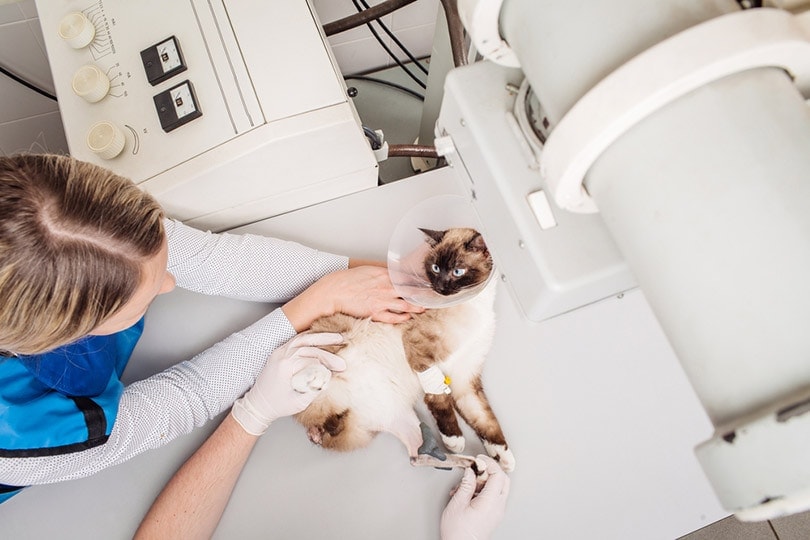
Is there anything I can do to reduce my cat’s risk of developing hemangiosarcoma?
If you have a white or light-colored cat, you may wish to keep them indoors to limit their exposure to sunlight. This may help reduce their risk of cutaneous hemangiosarcoma, as well as other types of skin cancer (e.g., squamous cell carcinoma).

Conclusion
Fortunately, hemangiosarcoma does not occur commonly in cats. Research into new treatment options may offer hope for cats diagnosed with this cancer in the future, but for now, the best thing cat owners can do is keep a close eye on their feline friends.
If you notice a new lump on your cat, or any other changes you are concerned about, schedule an appointment with your veterinarian right away. As with many medical conditions, early diagnosis of hemangiosarcoma may mean more options for treatment and a higher chance of a successful outcome.
Featured Image Credit: Maria Sbytova, Shutterstock





